Thanks
|
Dear Tony Without the capacity to breath - there is no conscious life. This reminds me of the pre-Christian use of the Greek term 'Psyche' which means 'breath of life' and which implies the 'autonomous movement' of mind and body. As Plotinus suggests - the breath (and the movement of mind and body) are inherently linked. This reality allows for a vast interpretation of the same basic idea(s) spread throughout the genre of Chinese martial arts. One layer superimposed over this foundational reality in the White Crane Fist System is that of the production of 'vibration' and 'shaking' - which appears to represent a scale (or polarity) between physical movements that are 'hard', 'soft' and 'neutral' - a layer of activity happening 'over' the breathing mechanism, so-to-speak. Or, so it would seem.
Thanks
0 Comments
This Senior Citizen silenced the crowd when she raised her leg above her head! Silence turned into awe when she assumed a perfect ‘Golden Rooster Stands on Guard’ (金鸡独立 - Jin Ji Du Li)! Awe turned into spontaneous applause when she assumed a graceful ‘Single Side Horse’ (一字马 - Yi Zi Ma) Splits! This demonstration of Taijiquan was performed by the 77-year-old Jiang Xuezhen (蒋雪珍) in a park near the ‘White Horse River’ (白马河 - Bai Ma He) - the venue for the 2021 ‘Dragon Boat Race’ held in Fuzhou (Fujian province), Mainland China! This elderly lady was originally an ordinary worker in a garment factory – but is now enjoying her retirement. Not only has she practiced Taijiquan diligently to improve her health and strengthen her weak body - but she also made a name for herself in West Lake Public Park (西湖公园 - Xi Hu Gong Yuan) teaching Taijiquan to the common people! Since her graceful and powerful appearance at the Dragon Boat Festival - Jiang Xuezhen's dazzling martial arts skills have aroused the interest of many citizens! Some citizens cannot help but wonder – if this older lady was a professional gymnast before? Was Jiang Xuezhen involved in a lifetime of athletic training and development? The answer to all these questions is a resounding ‘NO’! In fact, Jiang Xuezhen was an ordinary worker employed in a garment factory before retiring - and she had NEVER received any such specialist education in this area before. The advanced pliability of her body (and its ‘ligaments’) stem from the time of her retiring from working in the garment industry. Jiang Xuezhen had to retire from working in the garment industry at the age of 45-year due to a physical issue (for which she successfully underwent recuperative surgery). Jiang Xuezhen admits that this was a very confusing time for her both emotionally and psychologically! That is until one day, when she was walking to the West Lake Park (taking exercise), this lady encountered a group of people practicing Taijiquan! At that exact moment - EVERY movement of the Yang Style (the Beijing 24-Step Short-Form) she saw resonated with her mind and body - instantly attracting her attention! When Jiang Xuezhen returned home, she immediately made arrangements to purchase a Taijiquan instructional VCD – which she used to learn Taijiquan through watching carefully and copying the exercises! The next step involved Jiang Xuezhen seeking-out Taijiquan instructors who then corrected and adjusted her ‘Form’ whilst discussing explaining the history and purpose of each sequence - making the revitalising movements much more powerful and effective! Although it took a long time of committed and regular practice, the regular performance of the Taijiquan movements and sequences finally start to transform the natural state and condition of her muscles, joint, bones, ligaments and tendons. At the same time her overall health improved as her inner organs began to strengthen. These changes were so profound that her partner also began to regularly practice Taijiquan! Together, they founded the ‘West Lake Park Taijiquan Practice Group’ - which at the time of writing has at least one-hundred members! When giving a recent interview to reporters, Jiang Xuezhen stated: “It is said that with every inch the ligaments stretch – the lifespan is extended by ten years! This is why I stretch my legs every day!” Jiang Xuezhen went on to explain that when she first tried to lift her legs all those years ago – her ligaments were tense there was very little movement with pain! Jiang Xuezhen trained diligently between the ages of 45-60-years old, and then she found that one day ALL the tension in her body completely disappeared and she was able to drop down into the side-splits position – and stand with one leg held-up directly into the air! This is why Jiang Xuezhen is now able to assume the ‘Golden Rooster Stands on Guard’ and ‘Single Side Horse’ Splits with ease! After demonstrating her extraordinary Taijiquan skills, Jiang Xuezhen advises: “Concentrate upon an activity and pursue its perfection with diligence!” This is sound advice, as apart from being able to demonstrate her mastery of Taijiquan – Jiang Xuezhen is also a painter! Jiang Xuezhen explained that she liked to draw since a child - and has always kept one or two drawings of the Four Treasures in the study room at home - after retirement. When she was about 65-years old, Jiang Xuezhen accompanied her partner in the study of flower and bird painting in a university designed to cater to the needs of the elderly. After two years of meticulous flower and bird painting - Jiang Xuezhen turned to landscape painting. The landscape paintings provided by Jiang Xuezhen are truly inspiring – with the background and fore-ground scenery featuring lakes and mountains contrasting perfectly! The art of Jiang Xuezhen generates a unique beauty which is enhanced by an atmosphere which is experienced by the observer as being vast and hazy! Jiang Xuezhen describes herself as a very serious person. When she learns one thing, she spends all her energy on that single activity. In order to learn landscape painting well, she would only go out daily to practice Taijiquan, but rarely for any other reason. She would often spend a week focusing upon a single picture! Then, in order to match the landscape paintings with the beautiful ideograms that comprised the inscriptions, she also spent a year studying different Chinese calligraphy styles such as seal script, official script, and regular script. "If the font is not good-looking, and the inscription is not well-written, it cannot be regarded as a complete and perfect painting." Jiang Xuezhen explained. This is her true character. It has been nearly 30 years since Jiang Xuezhen retired – yet she has retained the eagerness to learn and perfect everything she turns her hand to! Today, in addition to Taijiquan and landscape painting, Jiang Xuezhen can also perform ballroom dancing! As if all these activities are not enough – Jiang Xuezhen also practices Shaolin martial arts! With her extensive knowledge base and engaging personality, Jiang Xuezhen has become something of an inspiration to the surrounding population – a cultural icon for modern China! [Source: Strait Metropolis Daily] Chinese Language Source: 花30年练太极,福州七旬老太一字马惊艳全场
高抬腿过头顶,一个爽快的金鸡独立瞬间赢得现场朋友的喝彩,随即她又在地上来了一个漂亮又利索的一字马,把节目推向了高潮……不久前,在福州白马河公园举行的端午节活动现场,一位老太的表演让不少市民自愧不如。这位老太就是福州77岁的蒋雪珍,原是服装厂工人的她,在退休后寻找到自我,不仅苦练太极拳改善了虚弱的身体,还在西湖公园“打”出了名堂,将太极拳教授给了更多的人。 60余岁练就金鸡独立、一字马动作 自从在端午节活动中的精彩亮相后,蒋雪珍的花式炫技引起了不少市民的兴趣,有的市民不禁疑惑问,这位老太太以前是不是体操运动员?其实,蒋雪珍退休前是一名服装厂的工人,之前也没有从事过这方面的练习,有着柔软的韧带的起因还要从她退休时说起。 45岁时的蒋雪珍因为身体原因动了手术后,便从原来就职的服装厂退休了。而突然的退休让将蒋雪珍手足无措,每日不知道该做些什么,陷入了迷茫。直到有一日,她散步到西湖公园时,看到了不少人在练太极拳,一招一式瞬间吸引了她的注意。抱着锻炼身体的想法,她购买了太极拳教学碟片,通过不断地的模仿练习学会了太极拳,在与太极拳老师的交流切磋中更精进了太极拳的动作。而在长期的锻炼后,蒋雪珍感到身体逐渐舒爽了不少,更是动员她的爱人一起到在西湖公园中练习太极拳。在30年间,不少市民自发向她学习太极拳,为此,她和爱人还成立了一个西湖如春太极辅助站,学员最多的时候达到了近百人。 “都说筋长一寸,寿延十年,每次运动后,我都拉拉腿。”蒋雪珍告诉记者,原先的她腿抬高一点腿都觉得筋绷得崩的紧,但在多年的锻炼中,她不断尝试拉伸韧带,到了60岁左右,才能可以做出金鸡独立、一字马的动作。 “专心做一件事,并要把它这件事做精” 除了一字马、金鸡独立、太极拳外,蒋雪珍还是一个画家。蒋雪珍说,她从小就喜欢画画,退休后在家里也时常备上文房四宝画上一两副。于是在她65岁左右,她的爱人便带她来到了老年大学里学习花鸟画,在两年的工笔花鸟设色学习入门后,蒋雪珍又转入山水画的学习中。在蒋雪珍提供的山水画作品中,湖和山相映衬的秀丽景色,在苍茫朦胧的氛围中有着独特的美感。 蒋雪珍自喻是个较真的人,学习一件事时,便将所以精力花在一件事上,为了学好山水画,她除了每日的太极拳练功外,便少有外出,常常花上一周的时间认真绘一幅画。而后为了给山水画配以好看的题款,她还用了一年的时间去学习了篆书、隶书、楷书等书体。“如果字体不好看,题款写不好就不能算是一幅完整、好看的画。”蒋雪珍说。 正是较真的性格,蒋奶奶在退休后的近30年间,不断地的保持好学的心,并将每件事做到精,如今的她除了太极拳、山水画外,她还会交际舞、少林武术,成了周围人口中“技能点满满”的潮人。 【来源:海峡都市报】 The traditional purpose of Karate-Do is said to be the development of the ‘Single Punch Precise Kill’ (一拳必殺) technique! This is because the historical origins of Karate-Do developed out of battlefield martial arts - specifically designed to kill and wound an opponent without mercy! The question for modern practitioners is whether this objective is suitable as a contemporary teaching device – and how should the technical inadequacies of the old ways be improved upon? It may well be the case that the potentially lethal elements of Karate-Do are retained (because they are inherent in the ancient martial techniques) - but that the ‘killing’ aspect should not be made the key point when teaching the public – and should be replaced by encouraging young students to develop their own minds and bodies whilst perfecting a virtuous character! Therefore, saving lives and helping others signifies a necessary shift in traditional attitudes when teaching Karate-Do to modern students. In fact, this is not a ‘new’’ attitude that I invented – but an idea taught to me by my father Miyagi Chojun. In-turn, this was an attitude inherited from Higaonna Kanryo (and his Chinese teachers). Although exactly the same ‘killing’ techniques are retained (and certainly not ‘removed’ from the art) - what is emphasised is character development so that clever ways of resolving conflict in the environment is utilised as a type of ethereal Karate-Do – that precedes any need to deploy potentially devastating physical techniques! The lethal reality of Karate-Do techniques, therefore, is ‘hidden’ within a deep and stratified approach to Goju Ryu Karate-Do, which is now embedded in the grading system involving coloured belts. If the practitioner does not suitably develop their mind (psychology) and body (physicality) - then they do not gain access to the ‘lethal’ nature of the genuine Goju Ryu Karate-Do techniques! Each practitioner must develop ‘trustworthiness’ before they are permitted to gain access to the deepest aspects of this ancient martial art! My father – Miyagi Chojun – maintained the emphasis of the ‘Hard’ (Go) aspect of Goju Ryu through the ‘Sanchin’ Kata which had been passed on to him by Higaonna Kanryo – but he felt the opposite element of ‘giving way’ was missing in the Style, or at least not very well represented. To remedy this, Miyagi Chojun developed the ‘Tensho’ Kata from a set of movements he had been taught in China from a White Crane Fist teacher in Fuzhou related in lineage to the Chinese teacher of Higaonna Kanryo. Bear in mind that ‘Tensho’ is NOT exactly the same as the Form (六機手 - Ro Ku ki Te) he learned in China and that Miyagi Chojun chose to modify its structure to assist the ‘balance’ of Goju Ryu Karate-Do methodology. This is where Miyagi Chojun developed the ‘Soft’ element of Goju Ryu which saw the Tensho Kata counter-balance the Sanchin Kata. When practiced together – the Yin (Soft) and Yang (Hard) energy within the mind and body is perfectly ‘balanced’! ‘Weaving Hand’ (機手 - Ki Te) is a principle found within the ‘Southern Fist’ martial system of China, and which relates to all the upper body movement of the extremities and the combat techniques which are expressed therein. Within the book entitled ‘Bubishi’ (武備志) (transmitted China to Okinawa) - there is an explanation of where the vital pressure points (経穴 - Kei Ketsu) are on the opponent’s body – and how the hand – used in the ‘open palm’ (開掌 - Hiraki Tenohira) position – can be used to ‘pierce’ these points and cause catastrophic damage to the opponent’s health! Higaonna Kanryo taught Miyagi Chojun how to ‘stand’ and ‘move’ through the ‘Sanchin’ Kata – and then Miyagi Chojun then developed ‘Tensho’ Kata to emphasis ‘Softness’ - but a ‘Softness’ with a lethal ‘hidden’ central element (involving pressure-point hitting)! The ‘Sanchin’ and ‘Tensho’ Katas are unique to Goju Ryu Karate-Do and are not found within ‘Shuri-Te’ (首里手) derived-traditions! These are foundational Katas that are taught to express the beginning and the end of the Goju Ryu Karate-Do training method! As this is the case, there are definite ‘breathing’ methods used when performing these Katas. The ‘Sanchin’ Kata employs what is referred to as a formalised ‘Yang Breath’ (陽の息吹 - Yō No Ibu Ki) - which sees the practitioner maintaining the ‘tightening’ of all the muscles around the bones throughout the entirety of the body – with the instructor continuously ‘testing’ to ensure this process is being adhered to correctly! Through these training methods, the practitioner learns how to shift and lower the centre of gravity, how to smoothly transition between various and different fighting techniques - all performed whilst breathing deeply and fully! Both myself and my father, however, teach preparation exercises which loosen and strengthen the body and focus the mind BEFORE any of these profound exercises are taught. This is important as students require a means of ‘entering’ the Style so that the Goju Ryu techniques are not experienced as a shock to the system. Correct preparation prevents unnecessary injury and conditions the mind and body so that the structures and processes become suitable for further and advanced training. This is the systematic application of the scientific process. Science does not stand still but provides opportunities for continuous and further development. Logic and reason must be brought to bear upon the established traditions using the old techniques and is immeasurable when providing a firm and dynamic foundation for further development! When I was young, Kano Jagoro (嘉納冶五郎) visited Okinawa (in 1927) and was very impressed in the rational approach that my father had incorporated into the structure of Higaonna Naha-Te (as it transitioned into Goju Ryu)! He even took elements of my father's training regimes and incorporated them into his ‘Judo’ training patterns! He agreed that logic and reason must be used within traditional martial arts as a means to ensure that these old ways are preserved and made relevant for survival within modern society! My father explained to Kano Jagoro that the structure of Karate-Do is similar to the physical structures of material objects – such as a house, a tower or a bridge, etc. If the design principles are not sound – the building and/or structure will not stand – and will not be able to fulfil the purpose for which it was made! The house will collapse, the tower will fall, and the bridge will give way! Kano Jagoro was impressed with this thinking and congratulated my father on his progressive attitude! Indeed, Kano Jagoro incorporated this type of thinking into his development of Judo technique! As for my father – Miyagi Chojun – he would later develop the ‘Gekisai’ (撃砕) Kata (Number One and Number Two), as a means to express the entire Goju Ryu Karate-Do path in just two short sets of movements which can be elaborated extensively when an instructor so chooses to do so! This was a substantial achievement which many other lineages of Goju Ryu misinterpret as being ‘simplistic’ or ‘beginning’ only Kata – but in reality, my father intended these Katas to be something much more important than this. If the ‘Gekisai’ Kata are closely examined, a whole new world of ‘meaning’ can be clearly discerned! This does not detract from the fact that the entirety of Goju Ryu Karate-Do is defined by the ‘Sanchin’ and the ‘Tensho’ Kata! When added together – there are ‘twelve’ (12) Kata preserved within Goju Ryu Karate-Do. The two ‘Gekisai’ are known as the ‘public’ Kata which are used to prepare a student for a more profound learning experience later on! Miyagi Chojun had a deep knowledge of geography and history as well as the Chinese Classics and was well versed in the different aspects of Eastern culture. I will never forget the image of my teacher - who used a dictionary as a pillow and would constantly look-up the meaning of words and think deeply about what he found! He was particularly knowledgeable about medicines and the physiology of the human body, and always studied Karate-Do from a medical point of view. This is why many of his acquaintances were also doctors. He studied Karate-Do from a modern and scientific point of view and designed its structure as a practical system! Indeed, modern Goju Ryu Karate-Do is designed around a scientific agenda which brings logic and reason to the practice of an ancient martial art! Although the techniques can be lethal if deployed a certain way – Miyagi Chojun ensured that the health-giving component of each technique was emphasised over its destructive element. An emphasis upon building a sound mind and a strong body replaced the destructive act of confusing the mind and harming the body of an opponent! Goju Ryu Karate-Do was maintained as a traditional fighting method with modern (medical) implications! 科学的空手道へ指導体系を確立 在来の空手道は、一拳必殺といわれるように、もっぱら実戦の場での殺傷の武術として発達してきたもので、術技のうえでも、現在の教育的見地からみれば、不適当な点もあった。 このため宮城長順は基本形―剛の形(サンチン=三戦)のほかに、「六機手」というものを研究して柔の形(テンショウ=転掌)をつくった。「機手」とは中国南拳の上肢の動作および技法のことを言い、沖縄に伝わった『武備志』のなかで相手の急所(経穴)を突く際の手(開掌)の使い方が述べられている。宮城長順はこの手法を研究し、鍛錬形としてテンショウを創始した。また、東恩納寛量から鍛えられたサンチンの立ち方と運歩法をはっきりと定義づけたのである。 サンチン、テンショウは首里手派にはなく、剛柔流空手道独自のものである。この基本形の鍛錬法においては、気息の呑吐法(陽の息吹)という形式化された独特な呼吸法があり、指導者による筋骨の締め方を伴う鍛錬法がある。こうした鍛錬法を通じて、「術技の変化」「気息の呑吐」「重心の移動」を体得するのである。 さらに宮城長順の創始したものとして、基本形・開手形に入る前に行う徒手体操式の空手道術技に関連した「予備運動法」と、柔軟で強力な体力を養成しながら空手道術技の上達を側面的。 に援助する補助運動法がある。この予備運動は修練上、非常に合理的な運動法であり、その重要性は計り知れないものがある。講道館柔道の創始者嘉納冶五郎が沖縄に来られ、そのとき師父が空手道の解説をしたのだが、嘉納師範は予備運動に非常に感心され、後の柔道体操に取り入れられたのではないかということを、私は師父から聞かされた。 また、教育的観点から、剛柔流空手道の普及形として、ゲキサイ(撃砕)第一、ゲキサイ第二の形を創始した。剛柔流空手道の形は、サンチン・テンショウの基本形と、二つの普及形を含めた十の開手形とを合わせ合計十二の形がある。 宮城長順は漢籍の素養はもとより、地理・歴史の造詣も深く、東洋文化にも通じていた。辞書を枕に絶えず辞書を繙き思索していた師父の姿が忘れられない。とりわけ薬種の知識、人体の生理に詳しく、常に医学的観点から空手道を研究していた。知人にも医者が多かった。そして空手道を近代的、科学的視点から考究し、練習体系として組み立てたのである。従来の空手道指導法を理論と実際に照らして修練の順序、方法を定め、武道として体育として、また精神修養の方法、健康法として、科学的に組織体系づけたのが剛柔流空手道である。
Sensei Yoshitaka Inokuma (猪熊佳孝) was born on the 25.2.1920 - and as of 2022 - he is currently 102-years-old! Although he currently holds an 8th Dan Black Belt Grade - he gave-up wearing the White 'gi' uniform and coloured belts years ago as he focuses to an ever greater degree on the 'Chinese' spiritual and physical roots of the martial art he tells everyone should be known as 'Chinese Hand' and not 'Empty Hand'! His Dojo is open twice a week for two 24 hour stints - where students can walk in and out as they please. (During its 'closed' days, individuals and groups can attend through arrangement)! Sensei Yoshitaka Inokuma (猪熊佳孝) does not teach all the classes (which are often directed by Sensei Masahiko Ando 8th Dan) - but can often be seen wandering in and out in a natural manner - very different to the average Japanese Dojo. At the conclusion of training, for instance, the teacher often sits with his students sharing a meal and a cup of tea with them - food that he has prepared himself! He describes his Karate-Do as being premised upon perfecting the following attributes: ・Concentrating unified power whilst performing and landing each technique. ・Unified power in generated within and expressed through the outer body. ・Karate is about gathering unified breathing power - and not brute strength. ・It is a martial art that includes throwing and joint-locking techniques. ・Okinawa Kobudo includes the weapons of Sai, Nunchaku and Bojutsu, etc. Shuri Ryu karate-Do is a traditional fighting system formed in Kyushu before the Sino-Japanese War (1937-1945) - which combines Okinawan Shuri-te (Shuri-Hand) and various elements of old Japanese martial arts. As is typical with many Okinawan martial arts - Shuri-Te has both Chinese and Okinawan influences. By combining these influence with Japanese fighting arts - a more all-round system was produced. This is the martial system that Yoshitaka Inokuma (猪熊佳孝) has taught at the Hasshokan Dojo for more than half a century - where he has established a temple for storing important historical objects and documents relating to the theory and practice of the martial art of Shuri Ryu. This Dojo is located Japan's Kagawa Prefecture, situated within Takamatsu City. Shuri Ryu involves the alignment of the bones and joints, as well as the alignment of the mind, body and environment! The must become calm, expansive and all embracing - whilst the bodyweight drops through the aligned bones and joints before hitting the ground and rebounding upwards - creating a massive counter-force which is transitioned around the body through 'will-power' and 'intention' - so that it can be emitted through the relevant (attacking) anatomical weapons. The Shuri Ryu practitioner is 'still' and perfectly 'centred' - and yet can move with a surprising speed and agility whilst applying an explosive power which is enhanced by a profound relaxation of body and mind! By breathing deeply and fully all these attributes fall into place and the centre of gravity is 'dropped' - ready to stabilise, move and evade, or 'explode' with a surprising force! Chinese Language References:
https://www.sohu.com/a/319652408_120134390 https://www.cup.com.hk/2019/04/15/99-years-old-karate-master/ Japanese Language References: https://seisiyoukan.jimdofree.com http://don110510.blog.jp/archives/17067832.html https://www.chunichi.co.jp/article/15123 If a practitioner of traditional Chinese martial arts spends twenty, thirty or forty years perfecting his or her art – then such an individual will experience many different levels and layers of reality as the ageing process unfolds. Of course, much of this will be circumstantial and culturally conditioned (varying from place to place, country to country) - but the ongoing experience of observing the inward biological and psychological process will always possess a certain universal reality common to all human beings. This is true despite many modern people linking their physical activity to the notion (and vagaries) associated with modern sport, commercialism and entertainment, etc. Therefore, many people living in the modern age often think that any sustained physical activity should cease around the age of thirty years old – as the first glimmer of the ageing process begins to make its presence felt! This idea seems to advocate the passive ‘giving-in’ to the ageing process and simply settling for a body that can no longer function as does the body of an eighteen-year-old – and which gets less able as the decades pass due to a terminal inactivity.
A genuine martial artist seeking mastery of body and mind must acknowledge and accommodate the ageing process. As the inner processes and the outer structures of the physical body transform, the traditional Chinese approach has always presented the ageing process as a doorway to a higher form of awareness, perception and physical ability. The modern, Western approach states that the human body becomes weaker the longer it lives. The onus upon this thinking is that this is the most meaningful interpretation of the ageing process and that no other view of the ageing process is required. Linked to this idea of a decrepit body is an entire medical industry offering expensive mechanical devices that assist the body as it weakens – together with entire rafts of various medicinal treatments designed to lighten the ageing process. This is only for the wealthy, of course, and although the scientific alleviation of the ageing process may well be a valid and important one if it were not so exploitative – my point is that as functioning individuals – we are responsible for our own awareness as it functions throughout the biological body and permeates the physical environment. There is nothing wrong with being ill, disabled or otherwise incapacitated. Ageing and illness are biological inevitabilities and should not be denied in anyway. The awareness capacity, however, as far as I am concerned (as I enter my 55th year of life) – is the only way a human being can adjust him or herself to the ever-changing circumstance that defines the ageing process. Not just being ‘aware’ in a passive manner but being ‘aware’ in a proactive manner that permeates the atoms and molecules of the physical body, and which strives to moderate behaviour throughout the physical body. Ironically, being ‘still’ in exactly the correct manner is an important part of traditional Chinese martial arts, which is the foundation of an enhanced (and evolutionarily) advanced ability to manifest the human body within the physical environment. This means that the manner in which the inner human body is perceived changes completely when the ageing process unfolds. Indeed, the ‘internal’ and ‘integrated’ methods of advanced Chinese martial arts practice are dependent upon being ‘old’ and the experience of getting ‘older’. As the out of date (and ‘lazy’) habits of youth fall away, then ‘new’ and more ‘intelligent’ methods of generating stability and power must be cultivated. Extraordinary amounts of stabilising power must be generated and sustained with as little conventional effort as possible. Conventional effort is the driving mechanism of youth which changes as the ageing process advances. It does not ‘disappear’ as many think but transforms and evolves – but many remain completely unaware of this developmental process. This is where the shallow (commercial) culture of the modern West fails the very individuality it creates. This is exactly where the ancient ideas of evolving conscious awareness and physical abilities come into play. When striking the heavy bag, the torso and limbs feel simultaneously ‘light’ for speed and ‘heavy’ for stability. The body is ‘relaxed’ whilst the limbs and torso are positioned perfectly so that the dropped bodyweight can be effectively rebounded from the ground and channelled into the target through the centre of the bones (which feel ‘hollow’ when performing this function). Furthermore, the ‘weight’ of the heavy bag can be momentarily absorbed into the bones and joints of the attacking body (that is the ‘hollow channels’) – before being dramatically expelled back out and into the heavy bag itself – being added to the bodyweight and effortlessly increasing the all-round impact of the punches, kicks, elbows and knees, etc. Meanwhile, as the ageing process unfolds, a tangible sense of space is permanently perceived as existing throughout the inner body which is filled with an energy that is vibrant, full of light and is a combination of physical bodyweight properly used – and an enhanced sense of psychological ‘awareness’ (which also expands outward and into the physical environment). I believe that this is a preparation for old-age and the eventual dying process – whereby the physical body drops-away and the psychological awareness folds-in upon itself. Although Britain used 'opium' grown in India as a means to unnaturally pollute the minds and bodies of the Chinese people (so that they could be more easily controlled by the European invaders), it is also true that traditional Chinese medicine has for centuries used 'opium' as a means to control psychological, emotional and physical pan. Indeed, for thousands of years 'opium' remained the ONLY naturally grown plant that could perform this task. Obviously, a doctor genuinely 'relieving' pain and thereby reducing the suffering of another human-being is very different from a European invading force within China that mis-used 'opium' to 'stupify' the minds and bodies of the already healthy masses so that they could not effectively organise a resistance to Western occupation and annexation of their country! The result of this despicable behaviour has been the literal demonisation of 'opium' when in fact when it is used in the right hands it is a very effective and legitimate medicine. Indeed, even modern Western medicine makes use of opium-derivatives in the production of the pain-killer 'morphine'. Description of 'opium' pipe owned by Master Chan Tin Sang (1924-1993). The 'smell' and 'taste' of the last 'smoke' is still evident. Bamboo stem (main-body) = dark brown in colour. Copper bowl and lower stem (all one design) = Reddish-brown in colour. Length of bamboo-stem plus copper-bowl = 19.75 Inches - 50.2 cm - 1 Foot 7.75 Inches - 0.502 Metres. Length of bamboo-stem minus copper-bowl = 17 Inches - 43.18 - 1 foot 5 Inches - 0.43 Metres. Copper-bowl Diameter = 1 inch - 2.5 cm Design on lower stem situated on the copper-bowl consists of six individual dots arranged around a single central dot (forming a flower motif). Four Old Style Chinese Characters are arranged equidistance around this 'flower'. A single row of Chinese characters run in a straight-line down back of the short copper stem (immediately behind) the copper-bowl. Foundational Taijiquan is practiced by those with health or mobility issues. This is a gentle set of physical movements designed to get a person moving around in a dextrous manner. Taijiquan can be very useful for those who are not fit and need some type of co-ordinated physical movement combined with deep and full breathing. With repetition this training process can build strength in the legs, improve balance and dexterity, and enhance the circulation of oxygen throughout the body by relaxing any and all unnecessary muscular tension. Through aligning the bones (and dropping the bodyweight into the ground), the bones, joints, ligaments and tendons are made more ‘robust’ through correct weight-bearing! Many people spend years working on this practice and quite often gain a considerable suppleness through this relaxation and the sharpening of ‘awareness’ in the mind! For many practitioners in the West, Taijiquan is encountered only later in life, and quite often is not the common spectacle it is in China and throughout many diasporic Chinese communities. The popularity of basic Taijiquan (even in China) relies on quick courses which involve a ‘coach’ who has learned a Short Taijiquan Form over a six-week time period and is then tasked with conveying these movements to two or three classes of students a few times a week! This approach certainly gets the basic techniques ‘out there’ and gives dedicated individuals a training platform which they can build upon at a later date. This can involve longer and more complex Taijiquan Forms (of which there are many Styles), and can even include competitions, seminars and demonstrations, etc. However, even if this type of practice results in winning a World Title for ‘moving about effectively’ - this is still not the complete Taijiquan practice. If you want to master the proper and in-depth practice of Taijiquan, you will have to find a genuine gongfu Master who is knowledgeable in Daoist self-cultivation technique and knows how to ‘fight’ in real life without compromising the sublime spiritual vision that underlies the Chinese martial arts. Following decades training with Master Chan Tin Sang (1924-1993) - I now occasionally have the honour of meeting the odd male or female Taijiquan Master through ‘invitation’ so that my physical and spiritual understanding of Taijiquan can be ‘tested’ and ‘confirmed’. Such encouragement ‘dissolves’ difficult to see ‘habitual blocks’ in the mind and body and moves onward or deeper into penetrating the empty essence of the Dao – as all movement is equally ‘empty’ and ‘still’ - this is why an immense power emanates through the channels that connect the ‘broad earth’ to the ‘divine sky’. This is why every perfect technique is both immensely ‘powerful’ and equally ‘empty’ from beginning to end – and within this freedom is vibrating a positive light that is a combination of wisdom, loving kindness and compassion for the entirety of existence! Advanced Taijiquan is a product of a perfected state of mind and body that expresses the perfect Taijiquan technique – but which is no longer ‘limited’ to the practice of the physical Taijiquan Form - which naturally manifests every moment of everyday, whether formally training, lying in bed, going to the toilet, meditating, making love or carrying-out your work! As many of you reading this either have a low opinion of Taijiquan or believe Taijiquan cannot be used for combat (viewpoints that are a product of a lack of direct cultural knowledge), the manner in which Taijiquan technique is used on a kick-bag is simple and straightforward. Advanced Taijiquan expresses the entire ‘bodyweight’ through any part of the body without any undue effort. Just as the bodyweight ‘drops’ into the ground through the aligned bone-structure – a re-bounding force naturally rises up continuously and without a break in the circuit. This remains true just as long as a practitioner is stood within a strong gravitational field. I start a suitable distance from the kick-bag and carry-out a mini-form set of co-ordinated movements that brings my body nearer the kick-bag and sets-up the power-technique! Today, I started with the left leg forward and threw on the spot a left-lead punch, right-reverse punch and left-lead punch. Weight shifted back onto the reverse right-leg (with bent left-leg forward in ‘cat stance’) and I throw a front-snap kick – landing forward on my properly placed left-foot and bringing the weight onto the left-leg. The power-shot is the reverse right roundhouse-kick – which swings through the air and impacts the bag with considerable and unhindered power! The process is repeated on the other side of the body and I repeat this for three-minutes. Any combination of techniques can be used that test the ‘smoothness’ of Taijiquan technique on the one-side – and the unbroken (and considerable) power on the other. Obviously, being ‘rooted’ is important as is continuously changing sides so that left and right are properly trained and tested (as true combat is unpredictable unlike fighting with rules during sporting encounters). The mind should be calm, still, aware and all-embracing so that it is ‘reflective’ of all phenomena (like a mirror). The Buddhist Surangama Sutra explains this principle, as do various Daoist texts such as the Laozi and Zhuangzi, etc, and the ‘Book of Changes’ (Yijing). Not everyone is trained to this depth of Taijiquan attainment, and not everyone wants to be trained to this degree – but it is an option with the proper training and instruction.
|
AuthorShifu Adrian Chan-Wyles (b. 1967) - Lineage (Generational) Inheritor of the Ch'an Dao Hakka Gongfu System. |


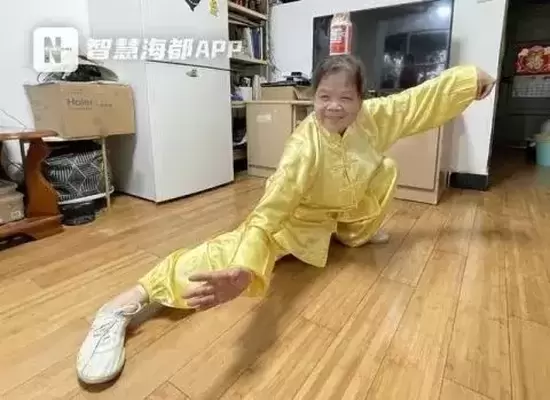

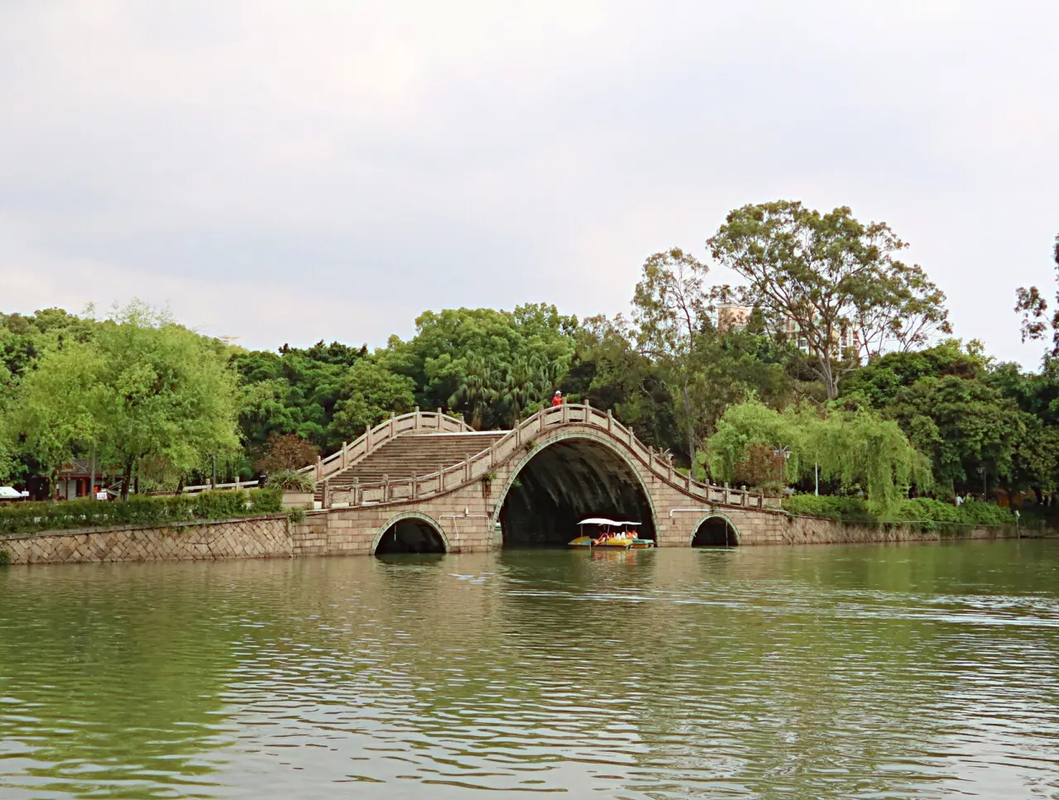

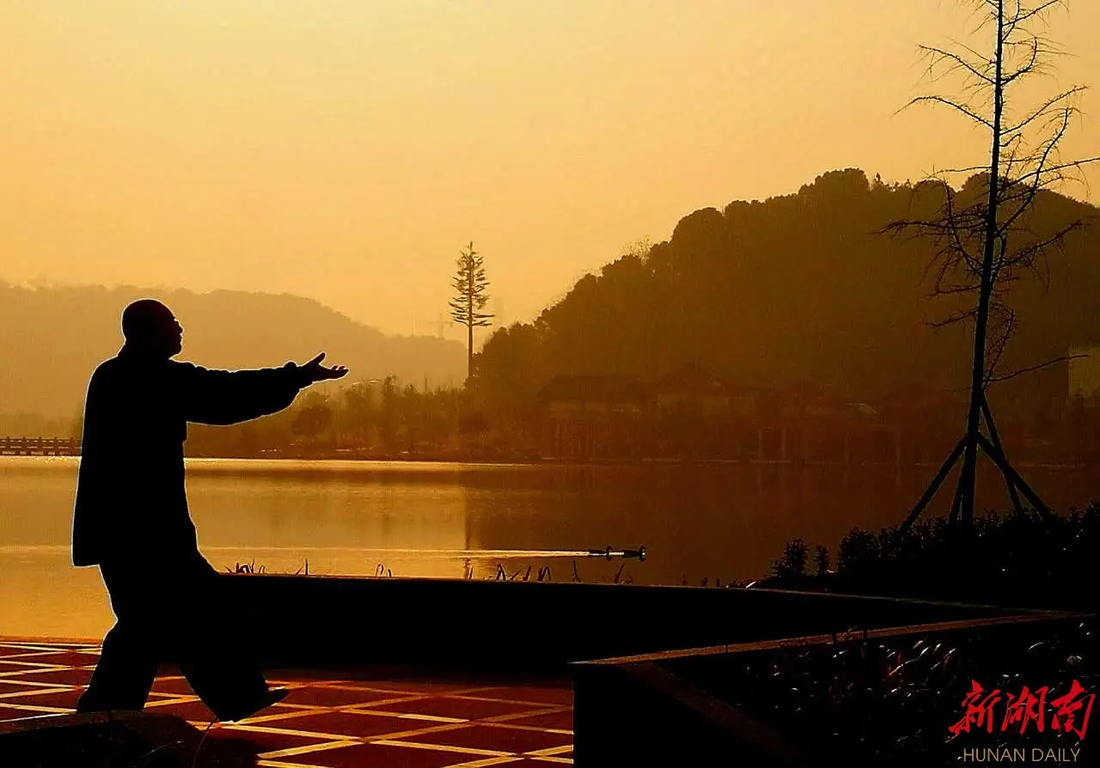









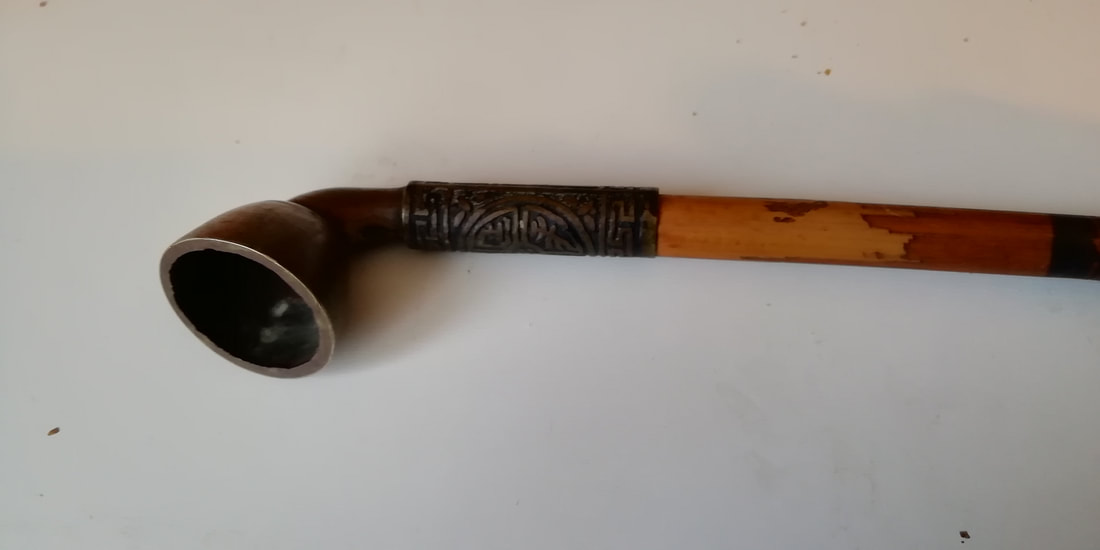




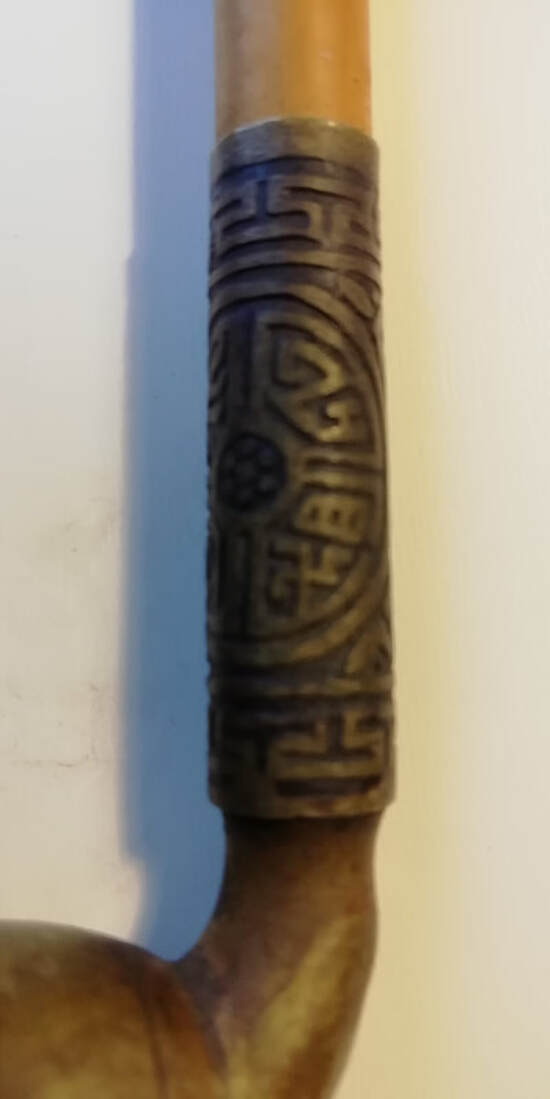




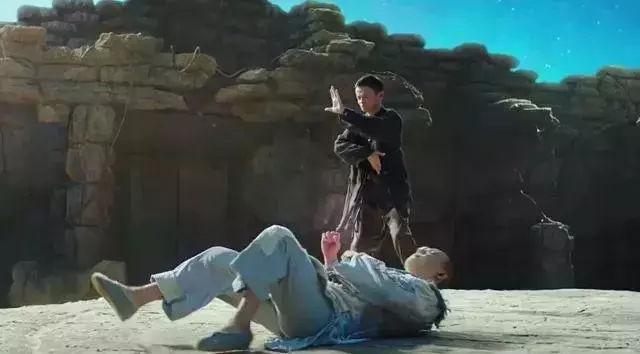

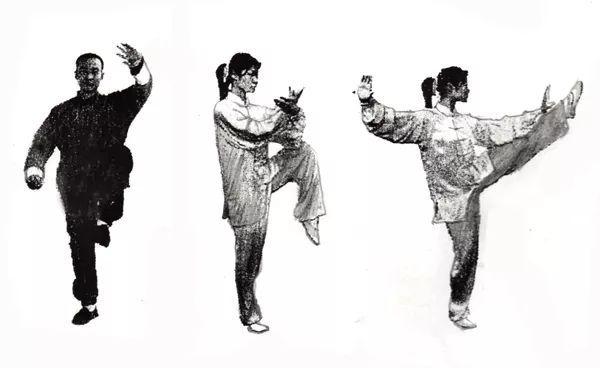

 RSS Feed
RSS Feed